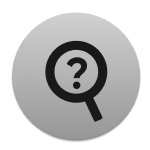It is a common belief that in the ancient state, babies who could not grow up healthy were thrown off a cliff soon after birth. We checked whether there is evidence for this legend.
The story of getting rid of unhealthy babies is mentioned not only in several works of fiction of different genres, but also in a number of textbooks: for example, on theories of state and law edited by Popova and by pedagogy edited by Krivshenko and Yurkina. At the same time, popular science portals Arzamas And "Russian Seven" claim that archaeological excavations have refuted a widely held belief. In 2020, about a Spartan custom that is strange by today’s standards during one of the meetings remembered Russian President Vladimir Putin: “They say that in Ancient Sparta, sick, crippled children were thrown from the Taygetos cliff. True, today historians and archaeologists believe that this is only a legend, a myth.”
Ancient authors wrote about this practice, which is shocking for modern people. For example, Plutarch in Comparative Lives told about the unenviable fate of weak babies in a book dedicated to the semi-legendary Spartan legislator Lycurgus (8th century BC). According to Plutarch, the newborn was referred to the elders, who examined him and “if the child was frail and ugly, he was sent to Apothetes (the name of the cliff on Taygetus), considering that his life was not needed either by himself or by the state, since he was denied health and strength from the very beginning.”
At the same time, in the biographies of other famous ancient figures written by Plutarch, there are statements that contradict this. For example, in the story about the Spartan king Agesilaus (V-IV centuries BC), the author reports, that he was lame from childhood (although “his beauty in his youth made his physical defect invisible”). How writes British expert on ancient history Paul Cartledge, the king was lame from birth, and grew up very short by Spartan standards, so his health problems were clearly not the result of injury. However, Agesilaus lived more than 80 years and led the Spartan army in several wars and campaigns.
Note that Plutarch lived in the 1st–2nd centuries AD e., that is, several centuries later than many of the heroes of his “Biographies.” How notice some historians and other ancient authors do not report such a custom in Sparta, and Plutarch himself is more interested in creating the image of his hero than in his exact biography.

In 2007, several publications (including Russian Lenta.ru And "New News", as well as Australian ABC) with reference to AFP reported that Greek scientists “refuted the legend of Spartan infanticide.” These publications reported on the work of Theodoros Pitsios of the University of Athens, who analyzed human remains discovered in the Apotheta Gorge and concluded that the people who died there were between 18 and 35 years old. In total, anthropologists examined the remains of 46 men who lived in the 6th–5th centuries and were probably prisoners of war, criminals or traitors.
Although we were unable to locate the AFP publication cited by media outlets around the world, the Pitsios study does exist. Is it true, dedicated it to the excavations that took place in the Caedas cave. Pitsios initially tested the hypothesis that adults were thrown into the gorge. Moreover, the anthropologist directly calls the rumors that children were thrown into the Caedas gorge “an unlikely, unconfirmed fiction, nevertheless widespread in our time.” Similar point of view adheres to including the Greek Ministry of Culture. The identification of the Caedas gorge with Apothetes is indeed widespread (so thought, for example, literary critic Mikhail Gasparov), but there is no exact certainty in this No.
Thus, we know about the Spartan custom of throwing unhealthy babies from a cliff from the writings of a relatively late ancient author, the reliability of which is in question. Moreover, there is evidence of how natives of Sparta with congenital ailments not only avoided early death, but also achieved very significant success. The information circulated several years ago that anthropologists and archaeologists explored the gorge mentioned by Plutarch and refuted infanticide is not entirely true - we do not know for sure where the Apothetes were located, and we cannot confidently identify them with the Caedas gorge. How writes in her doctoral dissertation on disability in ancient Greece, archaeologist Deborah Snead, “until we discover reliable evidence of such practices, such as child remains in the vicinity of Taygetos, we cannot make even preliminary statements.”
This is not accurate
- Arzamas. 7 myths about antiquity
- Plutarch. Comparative biographies
- T. Pitsios. Ancient Sparta — Research Program of Keadas Cavern
- D. Sneed. The Life Cycle of Disability in Ancient Greece
If you find a spelling or grammatical error, please let us know by highlighting the error text and clicking Ctrl+Enter.







